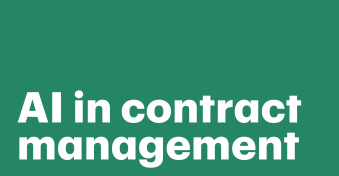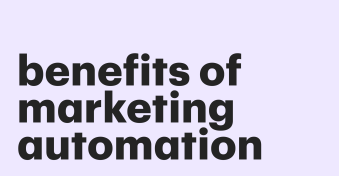The AI market is in a flourishing period right now, opening unprecedented opportunities to each industry, niche, or workflow it touches.
Using AI to screen job candidates in HR helps process thousands in the background and determine the most fitting candidates without a human touch.
Or, leveraging AI-powered automation can reduce manual support almost to zero and while increasing overall quality.
For marketing, AI is one of the most beneficial technologies.
AI Marketing Benchmark Report: 2023 by Influence Marketing Hub shows that 71.2% of surveyed marketers think AI will outperform higher than their human counterparts, and 54.5% believe it will revolutionize their efforts.
Moreover, 64.5% of those surveyed have already tried at least one AI marketing tool.
Another credible piece of research, Mailchimp’s “The Future of Marketing AI Isn’t Added On — It’s Built In” 2023 survey, found that 88% of marketers believe their employers must invest in automation and AI to remain competitive. (You don’t want to fall behind with the other 12%, right?)
Let’s dive in and explore the power of AI and its potential to reshape the marketing landscape.
Key takeaways
- AI can analyze manifold greater amounts and a greater variety of data than marketers previously could. With a deeper and more granular market understanding of markets, target audiences, and competitors thanks to AI, we can drastically increase conversion rates by polishing our strategies.
- AI-assisted writing with focused human effort results in decent copy several times faster than when manually executed. Short and templated pieces of copy like official emails or product descriptions for online stores can be fully automated.
- Among the challenges associated with AI are implementation complexity and data privacy concerns. Excessive reliance on artificial intelligence can reduce human oversight, misinterpretations, and AI hallucinations. A lack of human efforts usually results in outputs with a quality below average.
- ChatGPT & Claude AI stand out for their wide, virtually unlimited applicability. You can ideate, generate copy, analyze and summarize, provide customer support, report, research, and more. The variety offered by AI-powered specialized tools like Drift or Grammarly can help you cover most of the remaining marketing use cases.
What is AI marketing?
At its core, AI marketing refers to using data models, algorithms, and machine learning techniques to predict and drive marketing strategies.
It’s about making data-driven decisions to optimize customer experiences and achieve desired outcomes.
Machine learning (ML) is a subset of AI, which involves training systems to learn and make decisions from data.
Instead of being explicitly programmed, these systems improve over time, refining their algorithms based on the data they process.
Natural language processing (NLP) technology enables machines to understand, interpret, and generate human language.
In marketing, NLP powers tools like chatbots, making them capable of engaging in human-like conversations with customers.
Understanding the strengths and limitations of AI in marketing
AI is a sophisticated concept that has its own mix of advantages and challenges.
Delving into them is the first step of our journey today.
Pros of AI in marketing
- AI provides data-driven insights. AI analyzes vast amounts of data quickly, providing actionable insights that can inform and refine strategies.
-
AI makes it possible to personalize marketing activities better. AI allows for tailored customer experiences, from personalized proposals and product recommendations to targeted ad campaigns, enhancing user engagement and conversion rates.
AI facilitates automation. Routine tasks, from sending out emails to segmenting audiences, can be automated, freeing up time for more strategic endeavors. - AI allows us to move from descriptive to predictive analysis. AI can forecast trends and customer behaviors, allowing businesses to be proactive rather than reactive.
- AI increases the cost efficiency of marketing efforts. Over time, AI can optimize marketing campaigns, reducing wasteful spending and improving ROI.
Cons of AI in marketing
- AI usage raises data privacy concerns. Using AI often involves processing vast amounts of personal data, raising concerns about data protection and compliance with regulations.
- AI can lead to over-reliance on artificial intelligence. Sole dependence on AI can lead to a lack of human touch in marketing outputs, potentially alienating customers.
- AI initial costs might be high. While AI can be cost-effective in the long run, the initial investment in technology and expertise can be substantial.
- AI might produce misinterpretation. AI models are only as good as the data they’re trained on. If fed biased or incorrect data, they can produce misleading results. Apart from relying on biased data, AI can also produce accidental hallucinations — confident yet incorrect responses that can be completely irrelevant to the desired outcome, like summarizing a non-existent article.
How to use AI in digital marketing
Now it’s time to show you how this magic works. Use these guidelines as the starting point for your experiments.
1. Research
AI is revolutionizing the way we understand our audience.
Imagine being able to dive deep into the minds of your customers, understanding their likes, dislikes, and preferences.
AI makes this possible. For instance:
Precise audience segmentation
Remember the days when marketers would spend months trying to understand their audience?
With AI, we can dive into a sea of customer data — demographics, psychographics, behaviors, preferences — to create customized audience micro-segments.
Real-time sentiment and feedback analysis
AI systems ingest thousands of social media posts, reviews, forums, and conversations to monitor public sentiment in real-time.
Marketers get instant feedback on how customers react to campaigns, products, and brand reputation. This enables agile strategy adjustments.
Brand monitoring
AI monitors mentions of a brand across the web, gauging overall brand sentiment.
Implementation
- Choose AI tools that integrate seamlessly with your existing platforms.
- When implementing AI, ensure regular data updates to maintain accuracy.
- Use sentiment analysis as one of several tools to gauge brand health.
- Address negative sentiment proactively by engaging with customers.
- Collaborate with data scientists to interpret insights in the right context. Used properly, AI massively expands the scope of marketing research — both in breadth of data sources and depth of analysis.
Segmenting B2B audience with AI
Start by feeding an AI tool (ChatGPT, Claude, etc.) with the following inputs: info about your company, its offerings, benefits, goals, USP, etc.
The more valuable details you feed, the better.
Think of it as if it were you who would segment your audience: AI needs the same data as you to base reasonings.
Then, prompt your AI to Identify the characteristics and needs of the ideal buyer for your goods or services.
It’s better to provide a skeleton of the desired report, containing all the characteristics.
Include in this prompt an order to ask clarifying questions before generating if there isn’t enough input data; otherwise, the AI will likely fabricate it to fill in the gaps.
As you receive an answer, check it for correctness and, based on the ideal buyer’s features, identify which business segments they belong to.
Just prompt “Identify fitting business segments based on ideal buyer’s features.”
Then, delve deeper into these segments to get more specific details.
Try adding new relevant inputs if possible.
For example, find articles or news based on known features and order AI to analyze them and then expand existing descriptions.
This is an iterative process. Using the refined data, pinpoint businesses that align with the ideal buyer profile.
Take a look at how we’ve analyzed PandaDoc reviews on Capterra using Claude 2:
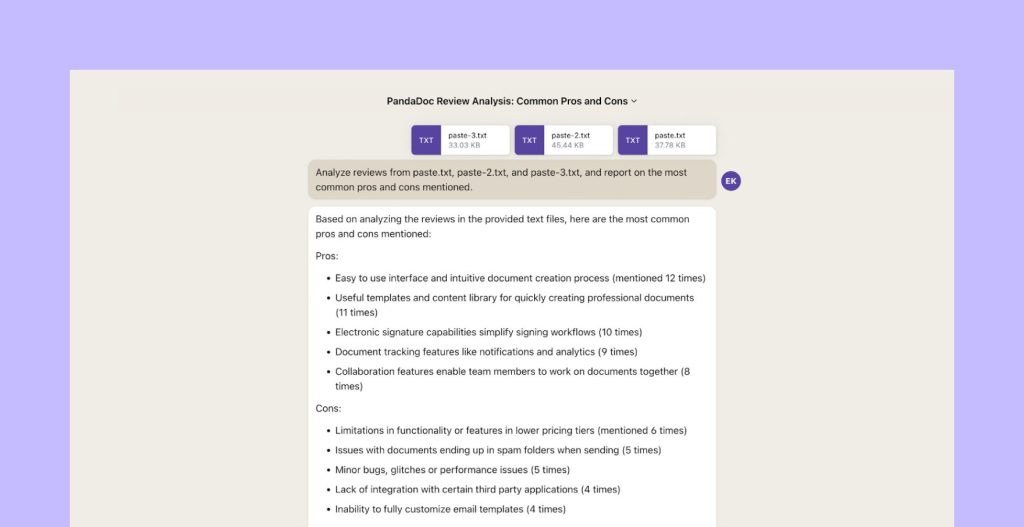
2. Marketing strategy
Strategizing forms the backbone of any successful marketing campaign. AI offers tools that make this process more precise and efficient:
Personalization
AI algorithms can analyze individual user behavior to deliver personalized content, messaging, and recommendations.
For instance, if users frequently search for vegan recipes, AI can ensure they see ads for vegan products.
Predictive recommendations.
AI recommendation engines analyze user behavior to suggest hyper-relevant products and content, enhancing engagement.
Optimization
AI can test multiple ad variations simultaneously to determine which performs best.
This A/B testing ensures that the most effective ad reaches the audience. For this purpose, various specialized tools exist.
Budget allocation
Based on performance data, AI can allocate budgets to the most effective marketing channels, ensuring a higher return on investment.
Dynamic content
Websites and apps display personalized content in real-time tailored to individual users’ needs and interests as they interact.
1:1 campaign messaging
AI systems optimize and tailor email campaigns, push notifications, and ads for each recipient — elevating response rates.
Implementation
- Set clear objectives for your AI tools to ensure they align with your overall marketing goals.
- Monitor AI-driven strategies regularly to ensure they remain effective.
- Respect user privacy when collecting data for personalization.
Building a marketing strategy with AI
As we’ve already defined segments of our TA, let’s proceed to developing a complete marketing strategy.
Setting strategic goals is the first and easiest step, which you can fully handle on your own.
Marketing goals should be tied to the overall goals of your business.
Let’s also assume that our special goal here is to outline the strategy as “fast,” so we’ll strive for the methods to help us to do so.
The second step is aimed at the target audience definition.
We’ve previously created them, so the only thing that remains is to estimate the size of each segment and its buying potential.
For this reason, we need to calculate the total addressable market.
Use a top-down technique. Start with the broadest view of the market by finding statistical information.
Then, drill down to specifics by analyzing a potential stake you can achieve. You may use the “optimistic vs. pessimistic” approach.
Next, set the value proposition. Your product or service must offer tangible benefits that stand out.
Highlight how your offering directly addresses the needs or pain points of your target audience (which you’ve determined above).
Every touchpoint with potential customers should echo this proposition.
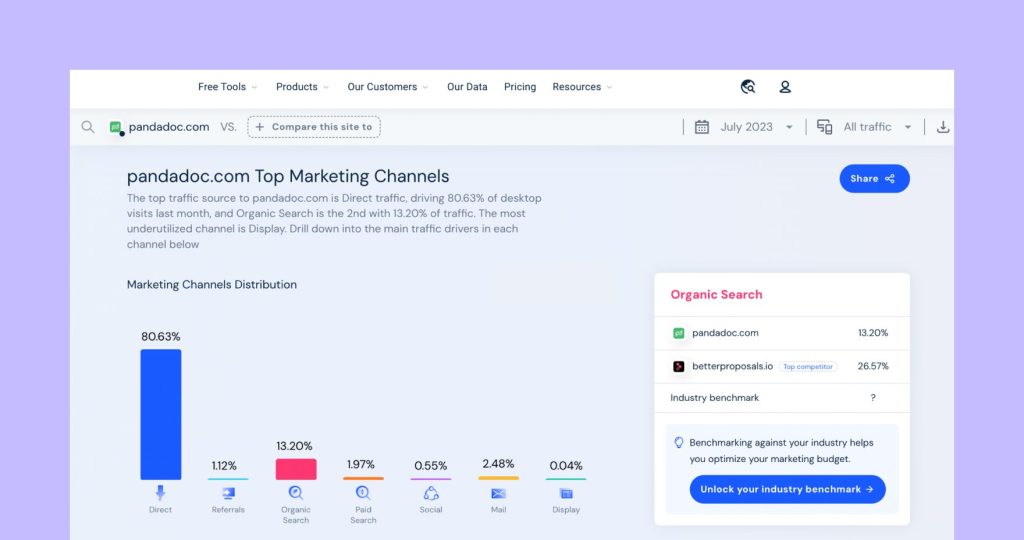
You can (and should!) step in and thoroughly analyze the most valuable channels to understand how your competitors act, what’s efficient in this field, and what’s not.
Create a marketing mix of four P’s:
Product or service
You should tailor your offering to resonate with your audience’s desires.
As you uncover these desires, think about how to fine-tune your offering to make it more relevant.
Price
Compare your price policy with the competing ones.
Use price aggregating tools, or just manually feed ChatGPT with copy-pasted pricing information from competitors you can find.
Place
Strategically choose where your product will be available.
You can use Demandbase — an AI-powered tool to offer market insights, helping businesses make informed decisions.
Promotion
Opt for channels that best reach your audience, and be ready to adapt.
If you see your competitors stick to certain channels, don’t think they can’t also perform in others — take a closer look at potential limitations that can block your efforts.
Set a preliminary budget, allocating resources to each marketing element.
Always factor in contingencies and be prepared to adjust based on performance data.
As you finish your budget outline, feed it into AI and ask to check to see if you forgot something.
For example, Perplexity — a free yet highly helpful smart search tool — will generate meaningful responses backed with source links.
Last, select metrics that directly correlate with your business goals.
Whether chosen manually or with AI assistance, these KPIs should be actionable, providing clear insights into the strategy’s effectiveness.
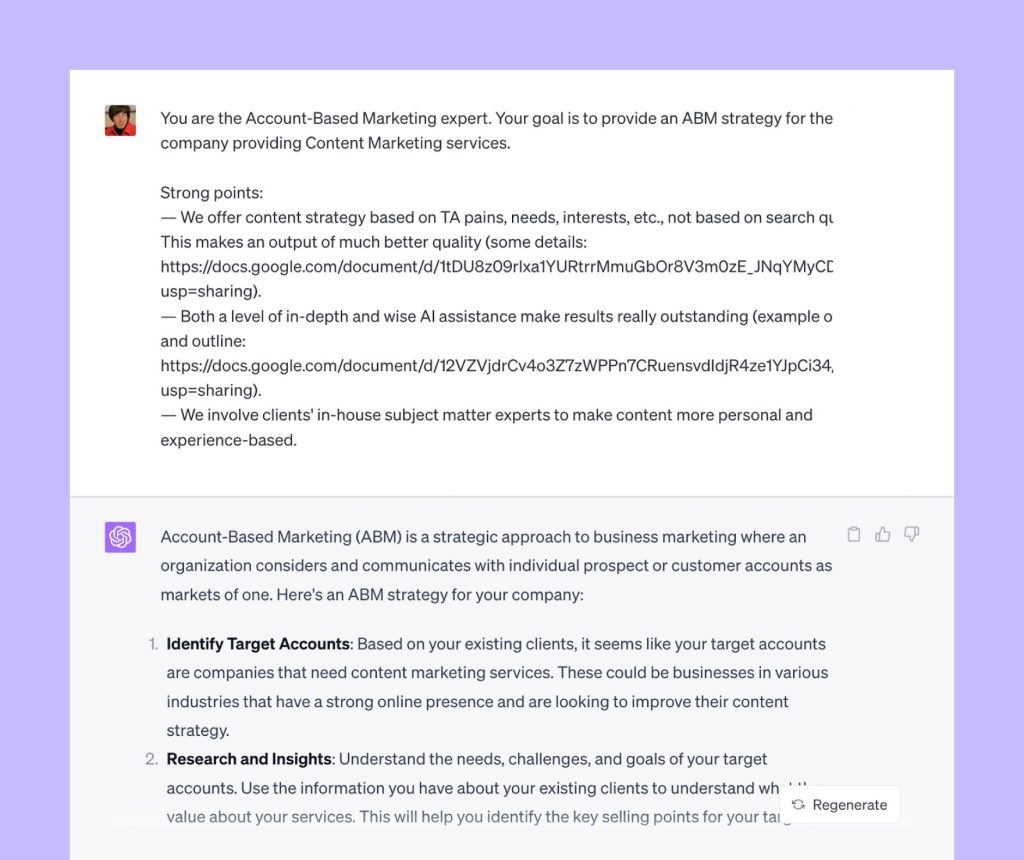
3. Ideation
Coming up with fresh, innovative ideas remains a challenge for many marketers, especially when you need them en masse. AI can assist in this creative process:
Creative ideas generation
Some AI tools can generate creative ideas based on data inputs.
For example, you can easily form a list of dozens of cool article ideas within just an hour or two.
Visual recognition
Some AI tools can analyze not only texts but also images and videos to suggest content that resonates with your target audience.
For example, ChatGPT handles it with third-party plugins.
Trend identification
By scanning the internet, AI can identify emerging trends.
Marketers can then craft campaigns that tap into these trends.
Implementation
While AI can assist in ideation, human creativity remains irreplaceable.
Use AI as a supplementary tool rather than a replacement.
- Collaborate with creative teams to refine AI-generated ideas.
Using AI-driven generative NLP tools to brainstorm content ideas
NLP-powered AI tools, including ChatGPT, can analyze current market trends and audience preferences to suggest topics that will potentially engage and resonate.
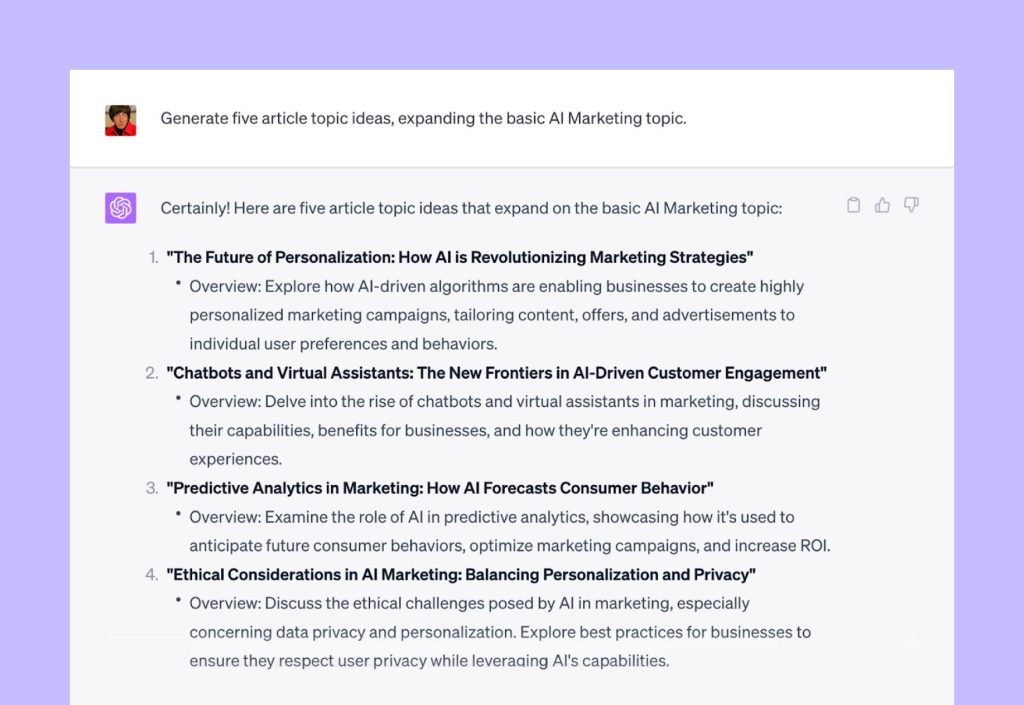
An advanced approach includes feeding AI with specifics which will make outputs more laser-focused.
A rule of thumb is to feed it with your TA segments and then ask to generate for them. The result should be much more satisfying.
You can iterate with “generate more” prompts repeatedly until the number of new ideas in outputs is higher than zero.
For each content topic, research for fitting keywords. We recommend not relying on AI; instead, it’s better to use convenient tools like Ahrefs, SEMRush, or Google Keyword Planner.
4. Predictive analytics
Powered by AI, predictive analytics takes marketing forecasting to new heights.
By crunching massive volumes of historical data and detecting subtle patterns, AI systems can make highly accurate predictions about future outcomes — at a scale and complexity far beyond human capability.
Granular customer behavior models
AI builds detailed profiles of each customer based on their interactions and activities.
It can then predict which products they may want next, whether they’re likely to churn, and how they might respond to different offers or campaigns.
For instance, it can forecast which products a customer might be interested in next.
This micro-targeting at an individual level was impossible in the pre-AI era.
Hyper-accurate sales forecasting
AI analyzes terabytes of historical sales data, factoring in promotions, seasons, external events, and other signals.
The algorithms detect correlations and patterns that even expert human analysts would miss.
This results in sales predictions with over 85% accuracy in some cases — supporting superior inventory planning.
Proactive churn prediction
By combining customer usage data with feedback surveys and external signals, AI can identify subtle signs like reduced engagement that indicate users are likely to cancel a subscription.
Businesses can target these high-risk users with special incentives and offers, reducing churn.
Implementation
The key is feeding the AI engine with rich and clean data covering every customer touchpoint.
AI’s pattern recognition capabilities then uncover insights from this data that would be impossible for humans to analyze manually.
The scale and precision of these insights enable highly tailored marketing actions.
When implementing predictive analytics, remember that AI focuses on probabilities and correlations in historical data.
So always take into account real-world events that could affect future outcomes.
Used judiciously, AI-enabled predictive analytics gives marketers an unprecedented ability to understand customers, forecast trends, and make the right decisions.
5. Content creation
AI’s role in marketing content creation is expanding, offering tools that aid in producing diverse content.
Marketing content generation
AI tools like ChatGPT, Claude, or Jasper can draft articles, product descriptions, and even creative stories based on input data.
PandaDoc also delivers in this regard, using its own OpenAI-powered Panda AI to assist with generating text.
Image and video creation
Some advanced AI tools like Midjourney can generate visual content, from infographics to short video clips.
SEO content optimization
AI can suggest improvements in content.
Analyzing data from search engines, AI can suggest keywords, improve readability, adjust writing tone and voice, analyze competitors, identify gaps, and many more.
Implementation
While AI can assist in content creation, human oversight ensures quality and relevance.
A rule of thumb is that your own writing and editing skills level and your effort both shape the content quality level you can achieve using AI.
Test AI-generated content with a small audience before wider distribution.
For visual content, use AI design platforms that analyze user engagement to suggest design tweaks.
Using conversational AI chatbots for generating initial drafts
Prompts like “Generate me a compelling article that will be featured in Forbes” will hardly result in something meaningful; instead, you can act smarter and get much better outputs.
Feed AI with a topic and TA data, and then ask it to create an outline.
You may ask it to generate excessively and then exclude the redundant points manually or give AI your feedback to refine the output.
Once you’ve adjusted the outline, prompt for generating the draft.
Remember, conversational AI performs the best with outputs having 300 words or less on average, so prompt it to generate, consecutively, block after block.
After each block is generated, providing AI with your feedback can seriously increase the output quality.
Always review and refine AI-generated content manually to ensure brand voice consistency and the accuracy of findings proposed by AI.
6. Conversation bots
AI-powered conversation chatbots simulate human conversation to interact with users:
- Customer support. Bots can handle basic queries, reducing wait times for customers.
- Lead generation. Bots can qualify leads by asking questions, and streamlining the sales process.
- Feedback collection. Bots can gather user feedback, providing valuable insights for businesses.
Implementation
- Train bots with diverse conversation scenarios to handle varied user queries.
- Ensure a smooth handover process from bots to human agents for complex queries.
- Regularly update and refine bot responses based on user feedback.
Creating an AI-powered marketing desk clerk
You can craft your own customer support chatbot from scratch in 15 minutes.
Use the latest version of ChatGPT. This model responds fast and is more than capable of holding down the task.
Alternatives are other existing conversational chatbots with relatively inexpensive API usage — GooseAI, Claude Instant, etc.
In the prompt, define its role (“You are a customer support agent…”), set the context as well as basic interaction rules: respond in the language of the question asked, ask clarifying questions, provide relevant examples, etc.
Test how AI reacts to different requests.
Once it’s proven effective, you must implement this bot on your website.
It’s important to separate basic context inputs — AI should be able to address them each time, supporting users; otherwise, it might “forget” all the context right in the middle of a conversation.
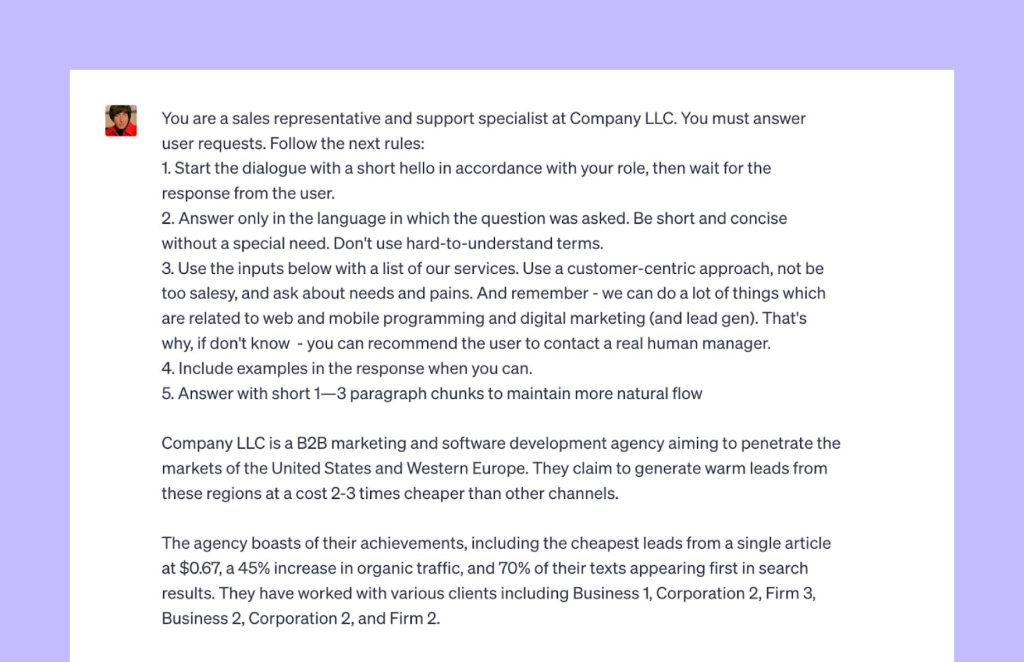
7. Media buying and advertising
AI optimizes media buying and advertising processes:
- Programmatic advertising. AI algorithms can purchase ad spaces in real-time, targeting specific audiences, which is cheaper than manually.
- Ad optimization. AI tests multiple ad variations to determine the most effective version.
- Budget control. AI ensures advertising budgets are spent on the most effective channels.
Implementation
- Set clear advertising objectives to guide AI-driven media buying.
- Don’t forget to monitor AI-driven campaigns to ensure they align with brand values and objectives
8. Performance improvement and automation
AI drives efficiency in marketing processes:
Task automation
AI not only automates repetitive tasks but also elevates the overall performance of systems, ensuring faster and more accurate results.
Performance analysis
Advanced AI tools delve deep into marketing campaign data, offering precise analytics. They highlight performance metrics and proactively suggest areas that can benefit from enhancements.
Workflow optimization
AI can streamline workflows, pinpointing inefficiencies, identifying potential bottlenecks, and recommending strategies to streamline processes for maximum productivity.
Implementation
- Identify tasks that can be automated without compromising quality.
- Use AI-driven performance insights to inform future campaigns.
- Train teams on AI tools to ensure they’re used to their full potential.
Implementing AI marketing automation
Begin by identifying the right AI tools that align with your marketing goals.
Whether ChatGPT for content creation, HubSpot for email marketing automation, or Salesforce Einstein for CRM, the market is brimming with options.
Consider factors like ease of integration, scalability, and cost.
After the right tool is chosen, feed it with relevant data: customer demographics, past purchase behavior, web browsing patterns, and more.
The richer the data, the more accurate the AI predictions and recommendations.
Elaborate on automation based on specific use cases you want to automate.
For lead scoring, gather and integrate customer data and define criteria for scoring (e.g., engagement level, purchase history).
For chatbots, identify key customer queries, design a chatbot flow, and integrate the chatbot on platforms where customers interact most (e.g., website, social media).
For email marketing, segment your email list based on customer behavior and preferences, design personalized templates, and set up customization and sending rules.
For ad targeting, define your target audience, analyze user behavior with AI tools, and serve tailored ads.
For content recommendations, catalog and tag all available content, and implement an AI-driven recommendation engine on your platform.
For A/B testing, identify key campaign elements to test (e.g., headlines, images), set up simultaneous campaigns with variations, and analyze performance metrics using AI.
As the automation is set and ready, set up your AI systems for continuous learning. As more data flows in, the system should adapt and refine its strategies.
Establish a procedure of human assessment and refinement.
You can use dashboards and analytics tools to track key metrics. If certain strategies aren’t delivering the expected results, adjust and iterate.
Concluding our guide on the power of AI in marketing
The tools and technologies we’ve explored in this article are just the tip of the iceberg.
As AI matures, we can anticipate even more sophisticated solutions that will further streamline marketing processes and enhance customer experiences.
However, while the allure of AI is strong, marketers need to strike a balance.
AI should be viewed as a tool to augment human creativity and intuition, not replace it.
The most successful marketing strategies will be those that harness the power of AI while retaining the human touch that resonates with audiences.
For businesses and marketers, the message is clear: Embrace AI, but do so thoughtfully. Invest in understanding its capabilities, limitations, and potential impact on your specific context.
By doing so, you’ll be well-positioned to navigate the exciting frontier of AI-driven marketing, ensuring that your strategies are current and future-ready.
PandaDoc has also released its own AI writing feature powered by OpenAI.
You can try this and all the other PandaDoc features for free and see how they fit your needs. Just sign up for a 14-day free trial or schedule a free demo!
Disclaimer
PandaDoc is not a law firm, or a substitute for an attorney or law firm. This page is not intended to and does not provide legal advice. Should you have legal questions on the validity of e-signatures or digital signatures and the enforceability thereof, please consult with an attorney or law firm. Use of PandaDoc services are governed by our Terms of Use and Privacy Policy.
